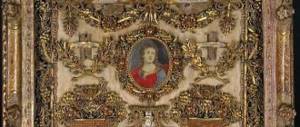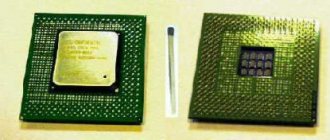How the mirror was invented
A mirror is a very simple object, but many mystical traditions and legends are associated with it, attributing almost paranormal abilities to them. We will tell you about the main stages in the development of mirror production and the most interesting stories associated with them in this post.
The first mirror can be considered the smooth surface of the water where our ancestors looked. Most likely, they did not immediately realize that it was them in the reflection, but gradually they realized it. The myth of Narcissus, who died falling in love with his own reflection, is associated with admiring oneself in the reflection of water.
Narcissus
In Turkey, archaeologists found polished pieces of volcanic glass - obsidian. Its age reaches about 7.5 thousand years. Mirrors were also made from stone, rock crystal, bronze, silver and gold. Only extremely wealthy people could afford such a mirror, since the mirror had to be carefully looked after. Bronze mirrors were made by pouring bronze into special molds. After the alloy hardened, it was carefully polished until it began to reflect sunlight.
Modern obsidian mirror
Ancient metal mirrors were known in all cultures before our era. They were made round like the sun, and they were credited with not only otherworldly, but also cleansing properties. For example, wars took mirrors with them to reflect their death. From antiquity to the present day, many legends have survived. One of them is dedicated to Perseus, who managed to outwit the Gorgon Medusa with the help of a bronze shield, forcing her to look into her shield like a mirror, which led to her petrification.
Bronze mirror. Back side. It is clear that over time an oxide film forms on bronze and it turns green.
Bronze mirror
Destroying ships using a mirror. Archimedes rejoices.
The brilliant inventor of antiquity, Archimedes, managed to use a mirror as a weapon. During the Punic War, Archimedes used mirrors to burn the Roman fleet that was besieging Syracuse. This day is 212 BC. e. the surviving Romans remembered it for the rest of their lives. Hundreds of small suns lit up on the fortress wall. At first they simply blinded the crew, but soon the incredible happened - the leading ships of the Romans began to flare up one after another, as if they were burning torches. The enemy's flight was panicky. Of course, there are significant disagreements regarding this historical fact. Thus, some scientists believe that Archimedes did not burn ships with the help of mirrors, but only used them as a guidance system for some kind of arson machines (prototypes of Greek fire could have been known to Archimedes even then).
The first glass mirrors were created by the Romans in the 1st century. n. e. The glass plate was connected to a lead or tin spacer, so the image was more vibrant than on metal. But since the process of the appearance of this kind of mirrors coincided with the collapse of the Roman Empire and the rapid spread of Christianity, mirrors began to go out of use (in Christianity the human body was considered dirty and sinful). In Christianity, a real war was declared on the mirror, since it was considered the product of the devil. It is interesting that in Eastern culture the attitude towards the mirror is exactly the opposite. In China, mirrors were made that were considered magical.
Ancient roman mirror
The modern history of mirrors is usually dated back to the 13th century, when glassblowers appeared in Europe. They poured molten tin into a glass flask and then broke it into pieces, so the mirrors turned out to be concave and distorted everything. However, it was precisely such mirrors that became assistants to medieval magicians and seers. They believed that concave mirrors are capable of collecting at their focus a certain astral light, which awakens the ability of clairvoyance in a person. In an incomprehensible way, looking ahead, back in the 13th century, Roger Bacon predicted the creation of a microscope and telescope, a car and an airplane. 200 years before the invention of gunpowder, he described its composition and principle of action. They say that the learned monk saw an amazing revelation in some mysterious mirror. Bacon himself mentioned it. Mirrors are also mentioned in the accusation that the churchmen brought against the greatest scientist of the Middle Ages:
He made two mirrors at Oxford University. With the help of one of them, he could light a candle at any time of the day. In the other, you could see what people were doing anywhere on Earth. Therefore, with the general consent of the university, both mirrors were broken.
It was only at the beginning of the 16th century that the Andrea Domenico brothers figured out how to make flat mirrors using mercury amalgam. The result was a sheet of mirror cloth, which was distinguished by its shine, crystal transparency and purity. But this secret was so carefully guarded in Venice that all the masters were moved to the island of Murana, where they became honorary prisoners. For a century and a half, Venice grew rich from the mirror monopoly, and the rest of Europe was almost bursting with envy.
Venetian mirror
The price of one Venetian mirror at that time was equal to the price of a small ship. Giving a mirror as a gift was considered the height of generosity. Only wealthy aristocrats and royalty could buy and collect them. For example, King Louis XIV was a passionate fan of mirrors. So, at one of the balls, Louis’s wife Anna of Austria came to the ball in a dress that was decorated with pieces of mirrors, which caused a wonderful glow in the light of candles at the ball. The dress cost the French treasury a lot of money, so it came to the point that his minister, Jean Baptiste Calbert, seduced the craftsmen from Muran with gold and promises and secretly took them to France. True, the Venetian authorities could not come to terms with such an insult and sent several threats to the masters so that they would return, but the masters ignored these threats, thinking that the king would be able to protect them. The Italian craftsmen enjoyed life, received high salaries and were happy with everything, until the most experienced of them died of poisoning, then a couple of weeks later the second one also died. Those who were still breathing realized that they would soon all be slaughtered like cattle, so they began to ask to go home. The French no longer kept them, because they had long ago mastered all the secrets of the masters. Thus, mirror technology became known throughout Europe, and Louis XIV built a mirror gallery for himself at Versailles. The French managed to surpass their teachers from Italy and improved mirror technology. Now mirror glass was produced by casting. The glass was melted, then the molten glass was poured directly from the melting crucible onto a flat surface and passed over it with a special roller. It is believed that the author of this technology is Luca De Negu. King Louis XIX rejoiced like a child as his guests were stunned by the brilliance of 306 mirrors.
Mirror Gallery at Versailles
Since that time, the mirror has taken its place of honor in the interior, and the manufacture of mirrors has become an important branch of European crafts. Not only the nobility and nobles wanted to have mirrors in their homes, but also artisans and merchants did not skimp on luxurious decoration for their homes and beloved women. Picturesque paintings of those times confirm the ongoing fashion for this item. Although the quality of the canvas remained low, its framing always met the latest architectural innovations. The frame has always become a real work of art. They could only compete with jewelry. They were cut from the most expensive types of wood and often decorated with precious stones. Frames and handles for small hand mirrors were made of silver, gold, bone and mother-of-pearl. Such a mirror was considered an exquisite and expensive gift, worthy not only of the beloved, but also of the empress herself. The rich people of the Baroque, Rococo and Classical times used mirrors immoderately, using them to decorate bedrooms, fireplaces and, of course, ladies' boudoirs.
In Rus', mirrors appeared much later than in Europe, and almost immediately the church declared them a demonic thing and an overseas sin, and therefore pious people avoided them. The taboo on mirrors was lifted only at the end of the 17th century, but even then not to the full extent. This is probably why there are so many superstitions associated with mirrors in Russian culture. In the old days in Rus' they used to tell fortunes using mirrors, and this was the most terrible fortune telling. The girl always locked herself in the bathhouse alone and placed two mirrors opposite each other. It was believed that at this moment a magical corridor opens in which you can see the future.
The first mirror production in Russia appeared, of course, under Peter I. The mirror factory was built in Moscow. In Peter's Russia, a mirror became a family heirloom. As a very expensive item, it was often given to a young girl as a dowry.
In the 18th century, mostly small mirrors were made, but in the 19th century everything changed - large format mirrors came into homes. This can partly be associated with the superstition of the townspeople, because it was considered a bad omen if a person in the mirror was not completely visible. For an ideal display from head to toe, mirrors were hung at an angle. Hence the massive base of the frame. It and the so-called kokoshnik were decorated with various designs and carvings, and for very rich customers even with precious stones. It is worth noting that Russian craftsmen have learned to make such huge mirrors. which amazed all of Europe. It is also interesting that Russian-made Venetian mirrors began to decorate even not very rich houses.
A revolution in the production of mirrors occurred in 1835 thanks to the German chemist Justus von Liebig, who began to use silver. This technology for making mirrors is still used today. In this short video you can take a look at the mirror production plant:
Mirrors have also found their use in the field of humor. It is possible that many of you reading this have been in a room of distorting mirrors, where your image is comically distorted in various ways.
Laughter room
Mirrors also have many scientific and industrial applications. The microscope and telescope have already been mentioned; with the help of mirrors, sunlight is concentrated in solar heating stations; they are used as reflectors in telescopes, searchlights, headlights, and heaters. Since the reflection in a convex mirror will always be virtual, it can be used as side mirrors in cars. The reflection will always be independent of the observer, which is why the driver does not see himself in the reflection of the mirror, but everything that he finds around the corresponding side of the car.
In medicine, otolaryngologists and dentists use concave mirrors to look into the most difficult to reach parts of our body. The ophthalmologist uses an ophthalmoscope, a spherical mirror with a small hole in the center, so that a beam of light from a lamp located on the side can be directed into the eye being examined. The light beam will pass from the retina and partially be reflected back from it, so the doctor will be able to see an image of the patient’s fundus.
One of the latest discoveries in science - gravitational waves, was made using a special system of mirrors. Here, two independently suspended mirrors oscillate in space due to gravitational waves, so the distance between them will be either smaller or larger.
The principle of interferometric detection of gravitational waves.
Project "Banner" - an ambitious plan to create an "artificial sun"
A space mirror is a device deployed in near space that allows one to reflect sunlight and illuminate certain areas of the Earth (cities, highways, natural disaster or military zones, etc.) in the dark. The history of the creation of space mirrors in Russia is very short: it began 25 years ago, and five years later it ended, seemingly leaving behind nothing but regrets about the fruitlessly wasted billions of public money. Meanwhile, this project was not only promising, but also, in all likelihood at that time, quite feasible. That’s why it received the proud name – the “Banner” project.
Solar sail...
The idea of using reflected sunlight “for the needs of the national economy” belongs to Konstantin Tsiolkovsky. But he and his followers considered illumination of the dark areas of the Earth to be only one of the possible uses of the reflected radiant energy of the Sun. The main purpose of using sunlight was to create solar sailboats - spaceships carried into interplanetary space by solar sails.
Of course, the pressure of sunlight in a vacuum is small - only 1 mg (thousandth of a gram) per square meter. m. However, if the surface area of the solar sail is large enough, and there is no friction force in airless space, then nothing will prevent the space sailboat from gradually accelerating to very high speeds. So large that they would make huge distances to other planets completely surmountable. The main thing is that no additional engine power is needed - everything will be done by the small but constant pressure of solar photons.
The matter, as they say, remained small - the technology for manufacturing and deploying such sails in space. But, as often happens during the transition from “science to production,” it took many decades before the first practical attempt was made.
...or "New World"?
And it happened like this. In 1988, on the eve of the 500th anniversary of the discovery of America, the US Congress announced the international competition "Columbus 500". Participants in the competition had to create a spacecraft under solar sails in four years and send it to the Moon. It was assumed that developed countries of North and South America and Eurasia would take part in the competition.
Read: NASA's plans to study solar system asteroids
Looking ahead, let's say that the supposed “space race” to the Moon never took place, but the interest of the world scientific community in the problems of space shipbuilding in general and space sailing ships in particular was significantly warmed up.
The USSR also announced its participation in the competition. Preparatory work has begun. This work, oddly enough, did not stop even after the well-known political events - the collapse of the Soviet Union and the change of power in the country. On the contrary, the Rocket and Space Corporation Energia named after. SP. Korolev, the Space Regatta consortium was created, the general director of which was the famous space technology designer Nikolai Sevastyanov.
It was the “Space Regatta” that developed the “Znamya-2” project. The project was not intended to launch a solar sailboat to the Moon; the emphasis was shifted from the solar sail to the “New World”, that is, to the first ever working model of a space mirror. And the astronauts in orbit had to take it into outer space and deploy it there.
The plant in Dolgoprudny, near Moscow, produced highly reflective fabric, incredibly thin (only 5 microns; 1 micron is equal to 1 millionth of a meter), light and extensive - an area of 20 square meters. A small metal cylinder was also made, acting as a mast, which contained the necessary equipment for deploying the mirror in space and remotely controlling this process.
"Space Daisy"
And on the night of February 3-4, 1993, a historical event took place. Cosmonauts Gennady Manakov and Alexander Poleshchuk, who installed a metal mast cylinder and a reflector rolled into a small roll on the Progress spacecraft, watched the opening of the world's first space mirror and transmitted the image to Earth, to the Mission Control Center (MCC).
Progress, after undocking from the Mir station and other necessary maneuvers, successfully and completely deployed the “mirror” fabric on all eight load-bearing sectors.
In the control center, crowded with excited observers, where the project manager Vladimir Syromyatnikov, his deputy Vladimir Branets and the general director of the Space Regatta Nikolai Sevastyanov were, there was a lively exchange of opinions. The lines were heard:
– It looks like the chariot of Elijah the prophet! - Hurry up to Leonardo da Vinci's helicopter... - A wheel rolling on the clouds! - Space daisy!
Read: NASA's Craziest Ideas
Judging by the surviving video recording, the spectacle was indeed fantastically beautiful. On the blue background of the illuminated side of the Earth, from a small spark of a metal cylinder, rotating smoothly and slowly, eight sparkling silver petals of a “cosmic daisy” grew. Engineers, physicists, space shipbuilders and other stern romantics of space present at the MCC would have been coming up with new names for the revealed mirror for a long time, if not for the need to move on to the second stage of the Znamya-2 project.
Yes, the design of the mirror model has shown its viability. Yes, the reflective polyethylene terephthalate film, just 5 microns thick, was successfully deployed in space without wrinkles, creases or tears, and a special flexible ring ensured the round shape of the 20-meter mirror. But the main question remained to be answered: could such a mirror reflect a “sunny spot” of a given size, degree of illumination and stability onto the dark side of the Earth?
The Progress M-15 spacecraft moved for about six minutes, keeping to the terminator line (the boundary between the illuminated and dark sides of the Earth). During this time, a “sunny bunny” with a diameter of about 5 kilometers swept at a speed of 8 km/sec from France to Belarus, where it was caught by the sunrise. Despite the fact that it was completely cloudy over Europe, many people saw flashes of light in the sky. German meteorologists even recorded the illumination from the light spot of Znamya-2; it was approximately 1 lux (1 lumen per sq. m).
At first glance, quite a bit, less than a 60-watt incandescent light bulb. But, given the small size of the mirror and the fact that it was not a room or a house that was illuminated, but a circle with a diameter of five kilometers, the reflected light could be comparable in strength to the light of the full Moon.
The astronauts also confirmed the movement of the “sunbeam” across a selected area of the Earth’s surface, although it was not possible to make high-quality video recording from the ISS.
Overall, it was a success. Russian scientists immediately began preparing the next experiment, called Znamya-2.5. It was planned that this would be a transitional stage towards the creation of a full-fledged, already 200-meter, space mirror that could illuminate much larger regions and for a longer time.
Read: History of the Buran shuttle
Is the end the beginning?
Unfortunately, the Znamya-2.5 project failed. On February 4, 1999, the mirror installed on board the Progress-M40 transport spacecraft began to unfold, but caught on the antenna and became entangled in it. The experiment failed and the ship was sunk in the ocean.
They didn’t even take on the Znamya-3 project, the one with a 200-meter mirror. The matter is very expensive, and the country at that time had many other financial problems.
It seemed that this was the end of the story of space mirrors. However, the idea of using reflected sunlight to illuminate the Earth remained too attractive for scientists, energy engineers, and economists not to return to it from time to time.
Thus, in June 2012, the 25th International ECOS Conference was held in Italy, dedicated to promising ways to develop environmentally friendly energy. The benefits of space mirrors were also discussed at this event. If a mirror was created and deployed in space without the use of complex electronics, which would direct the reflected light to small ground-based “light collectors”, and also illuminate cities at night, this could, perhaps, pay off over time and even become economically profitable.
Technologically, as the Russian experiment “Znamya-2” showed, this is quite feasible. Of course, in order to pay off and gain benefits, the space mirror must be very large, but, in principle, this is a solvable problem. And perhaps in the near future someone will take up the solution.
Perhaps it will even be ours, Russian scientists and engineers again. Such as the developers of the Mayak project from the Moscow State Engineering University. The design of “Mayak” uses the same ideas of reflective film as in the “Znamya-2” project. And although the satellite itself will not look like a “cosmic daisy”, but like a sparkling regular triangular pyramid with a side of only 3 meters, its developers hope - in the event of a successful launch of Mayak - to return to the Znamya-3 project.
You might be interested in:
- Space travel under a solar sail
- Future expeditions
- And the sun is in the sails
- What is the Sun made of?
- A giant unidentified object is moving in the orbit of the Sun
- Solar cycle
Subscribe to our channels in
Yandex Zen and Telegram






